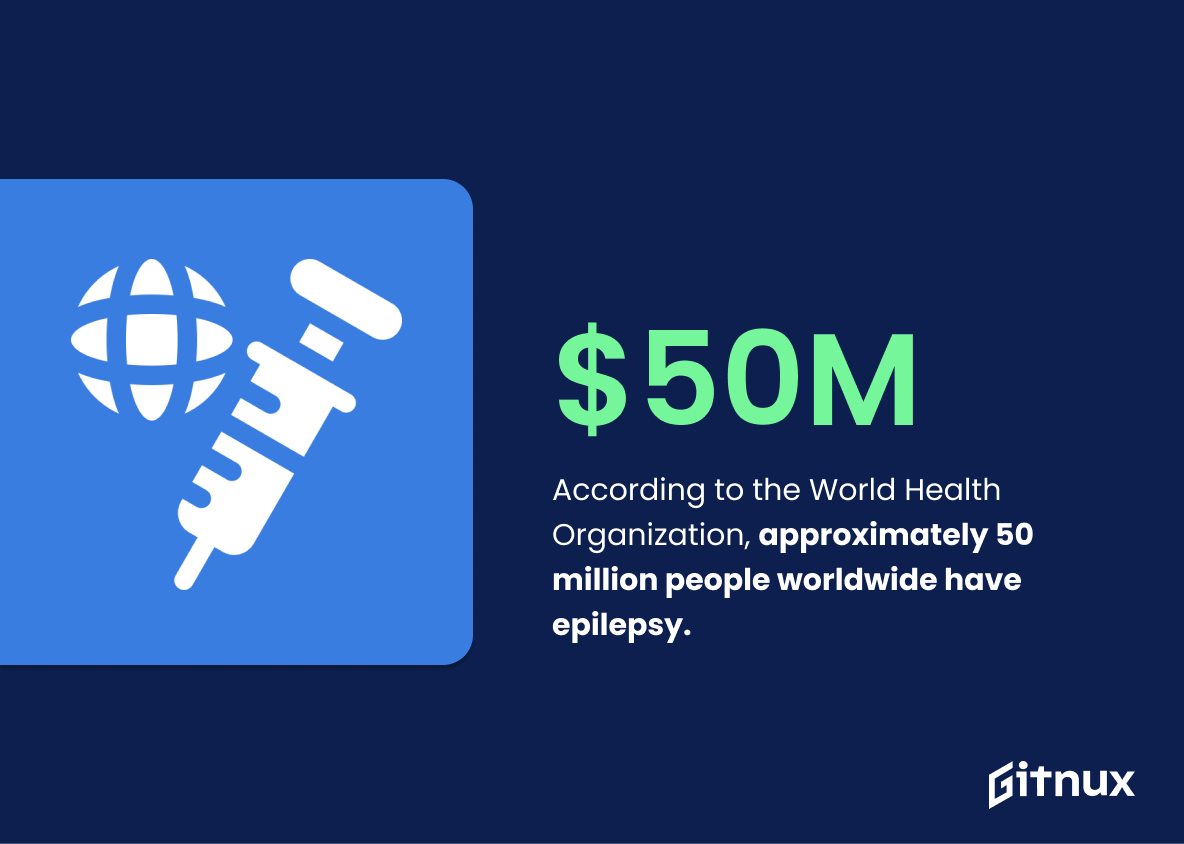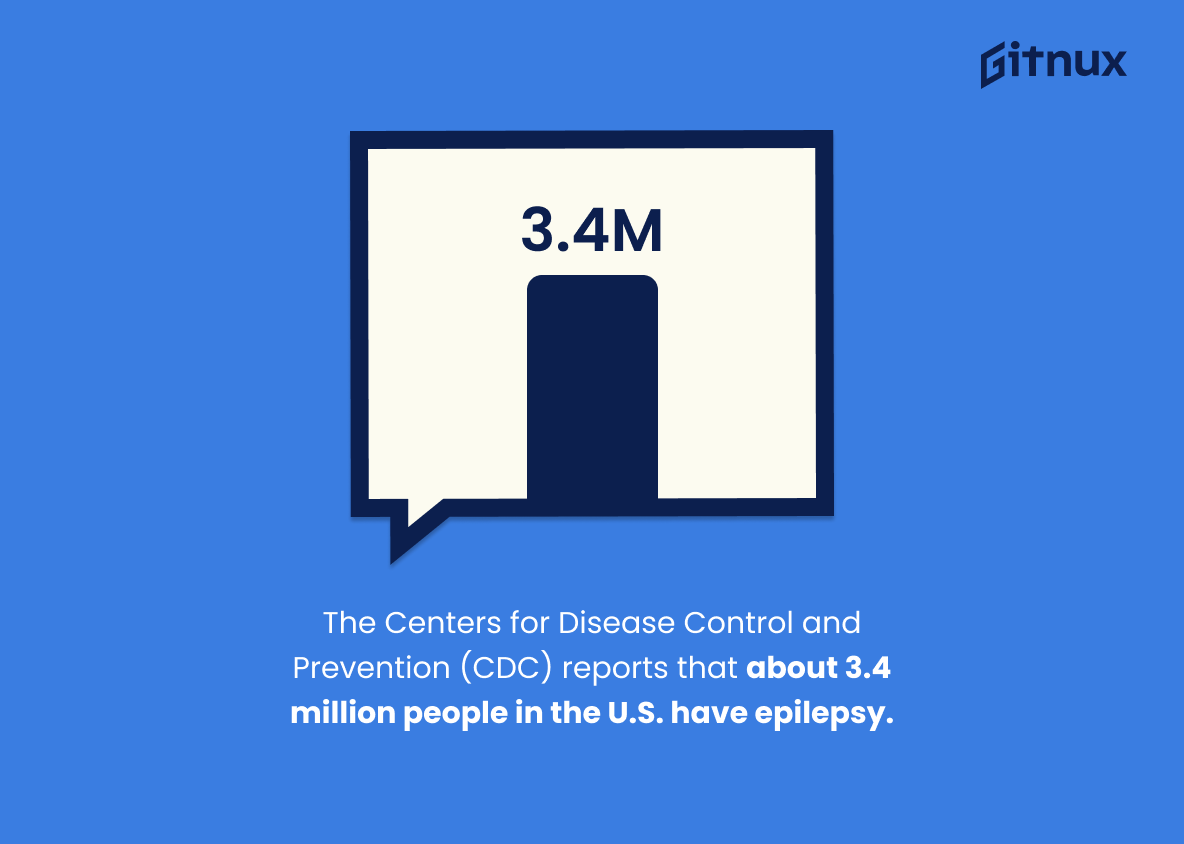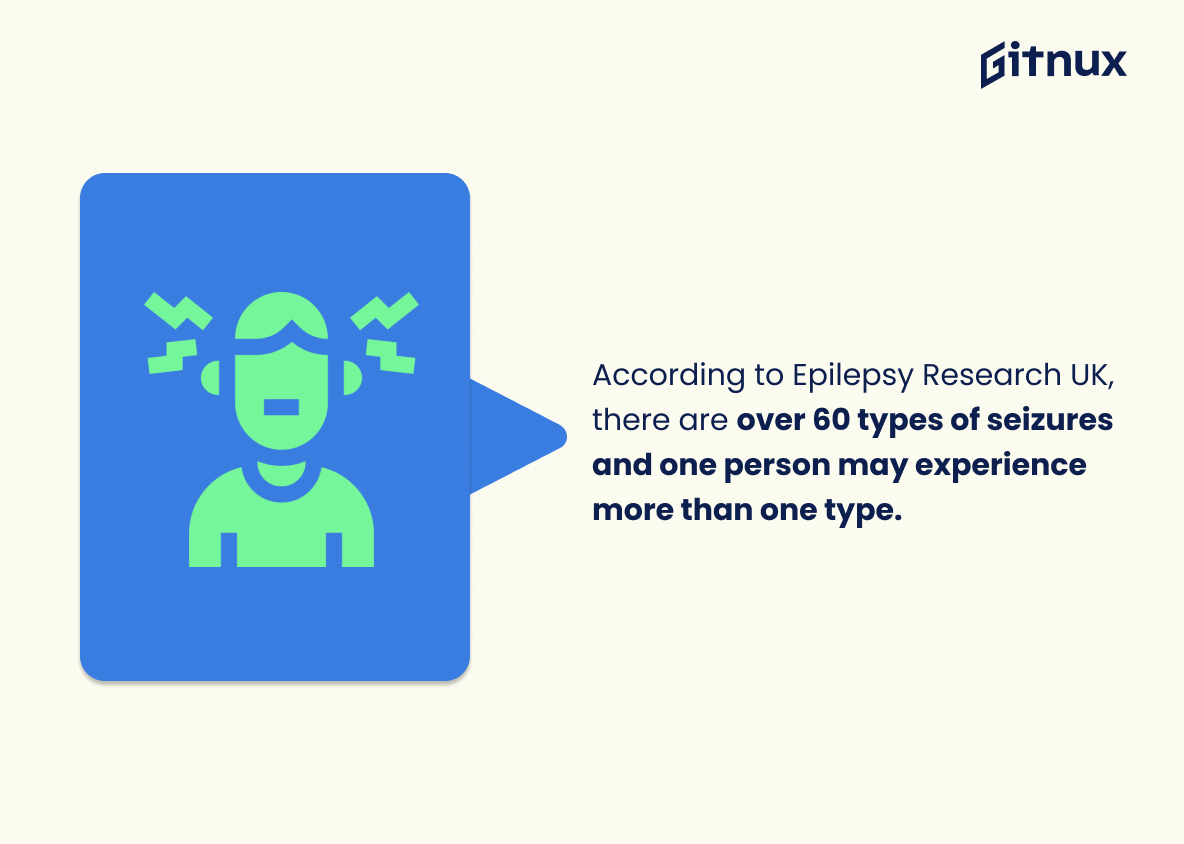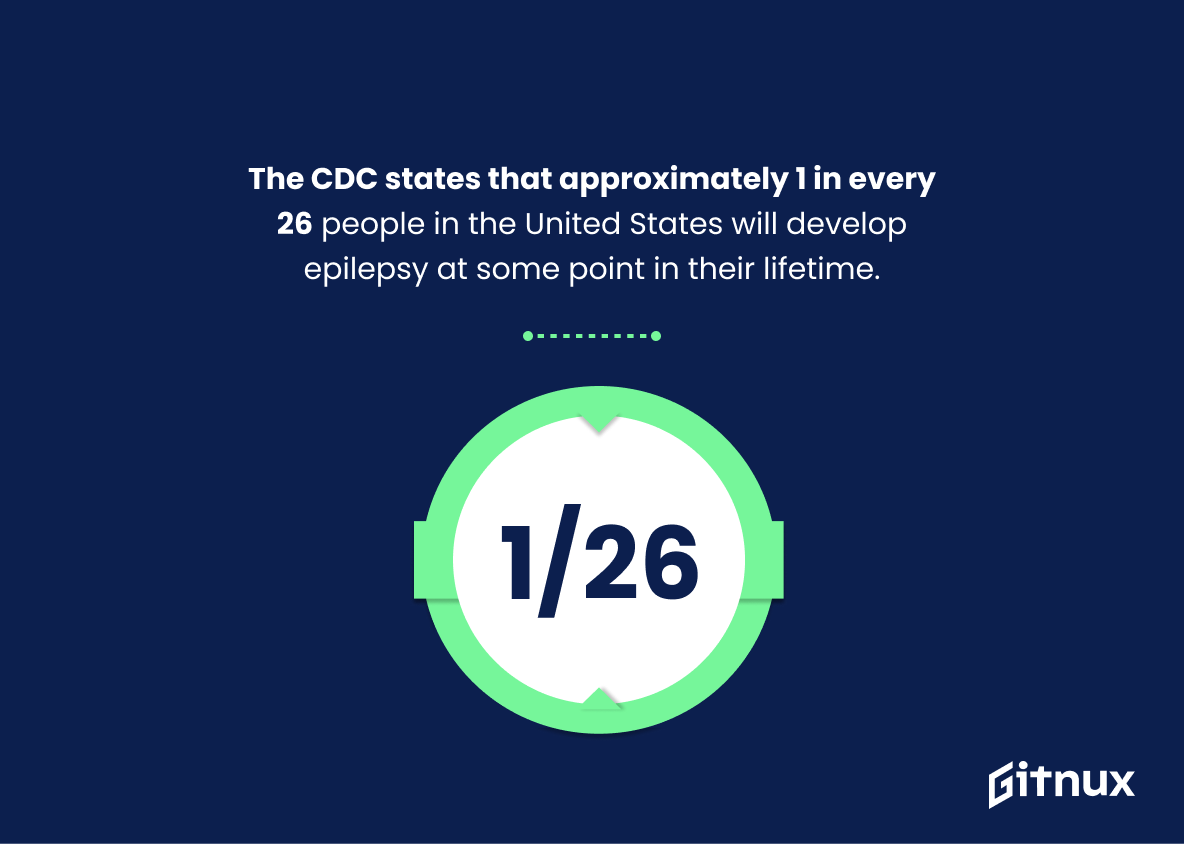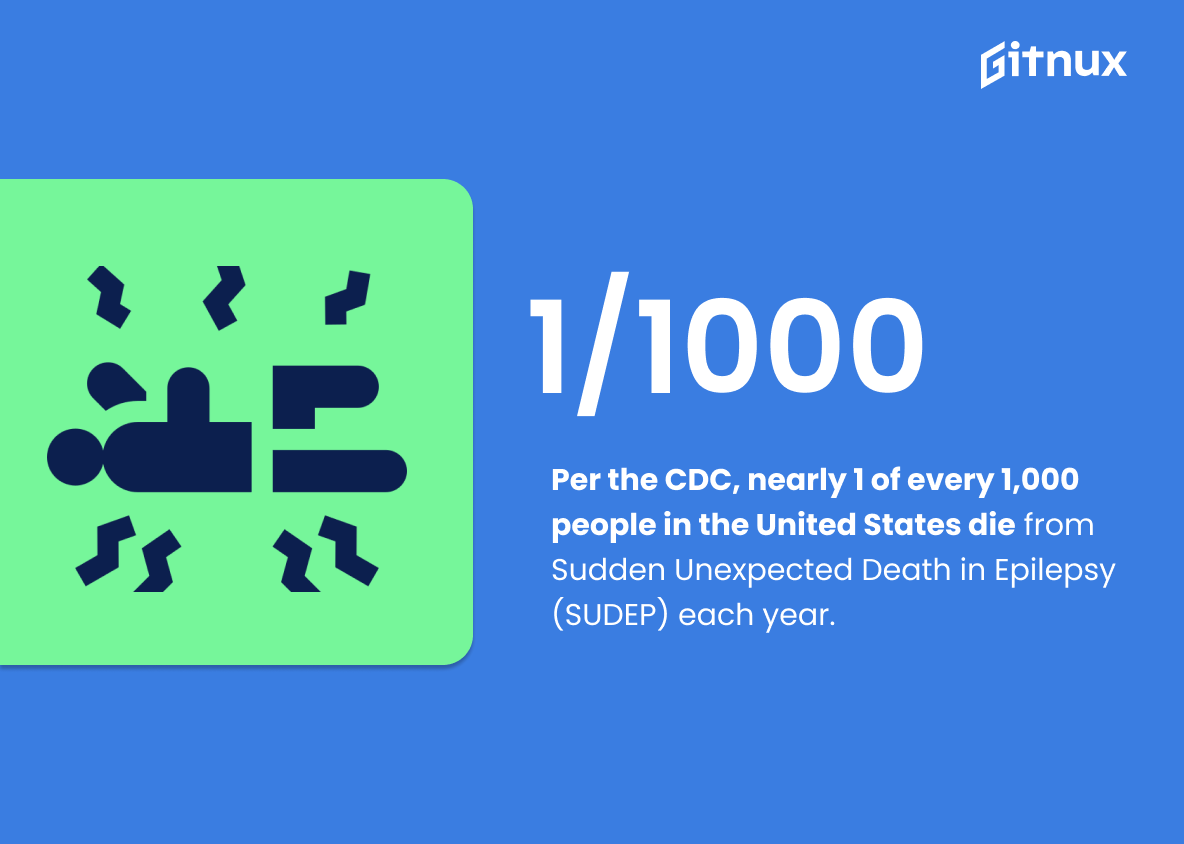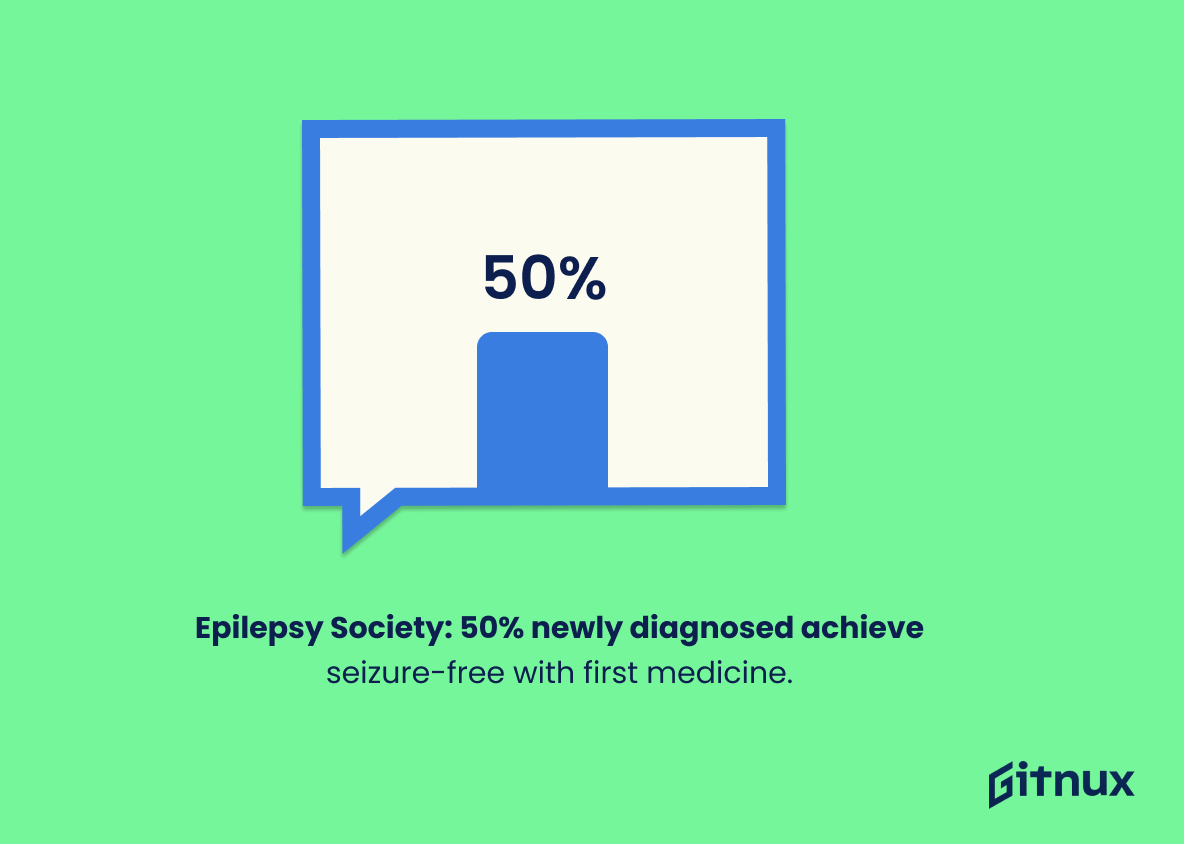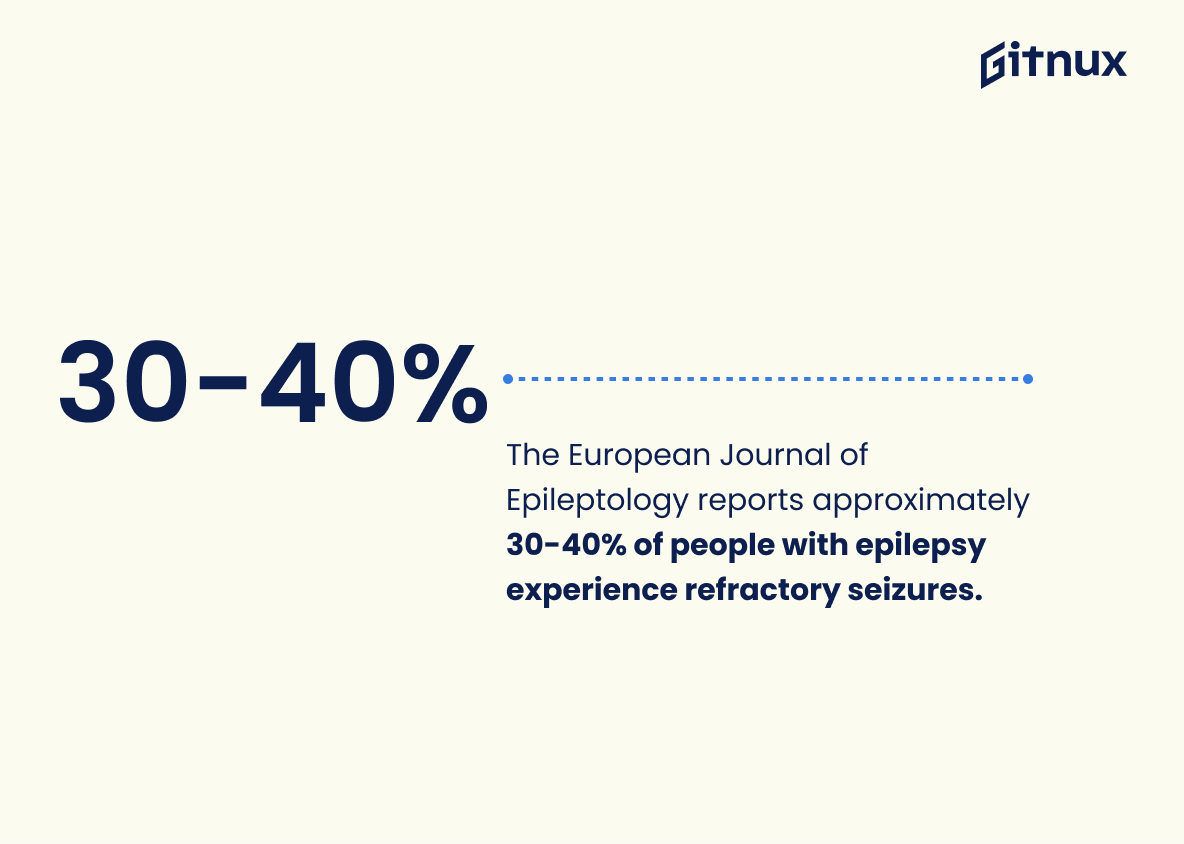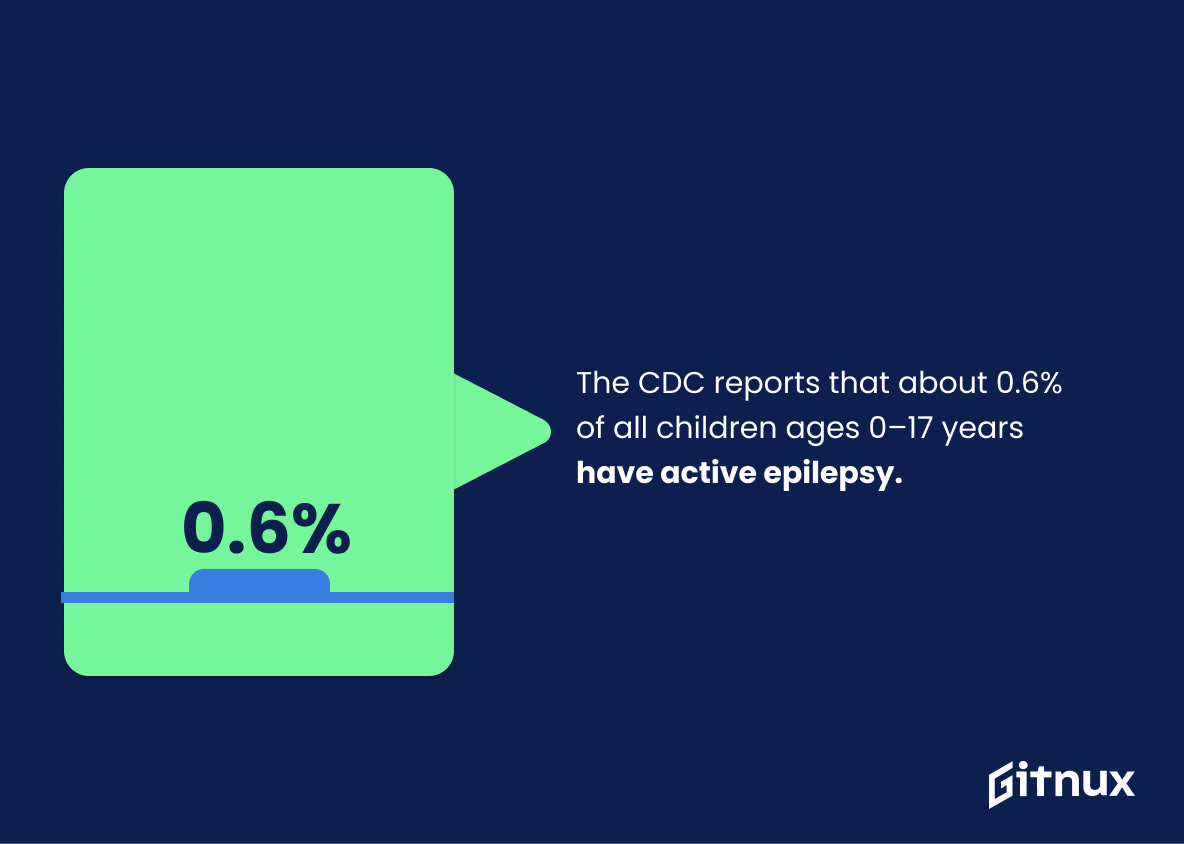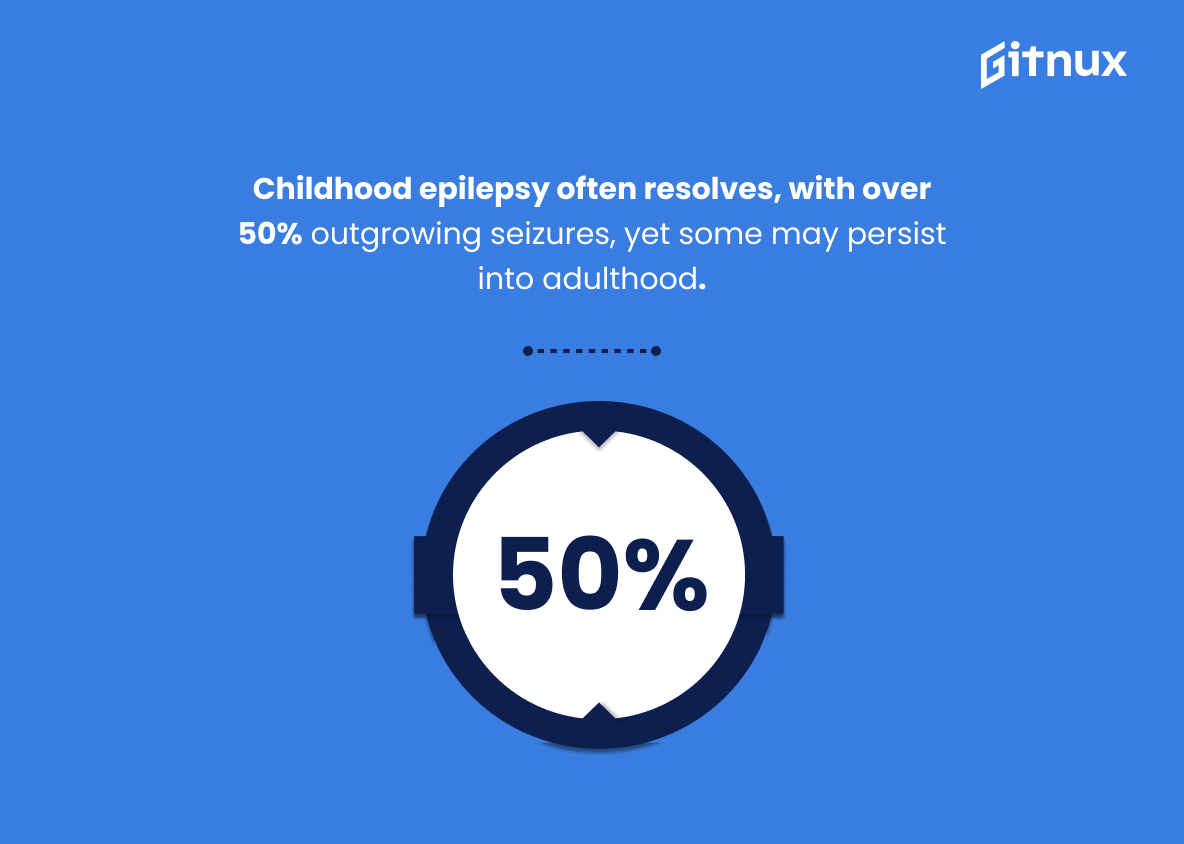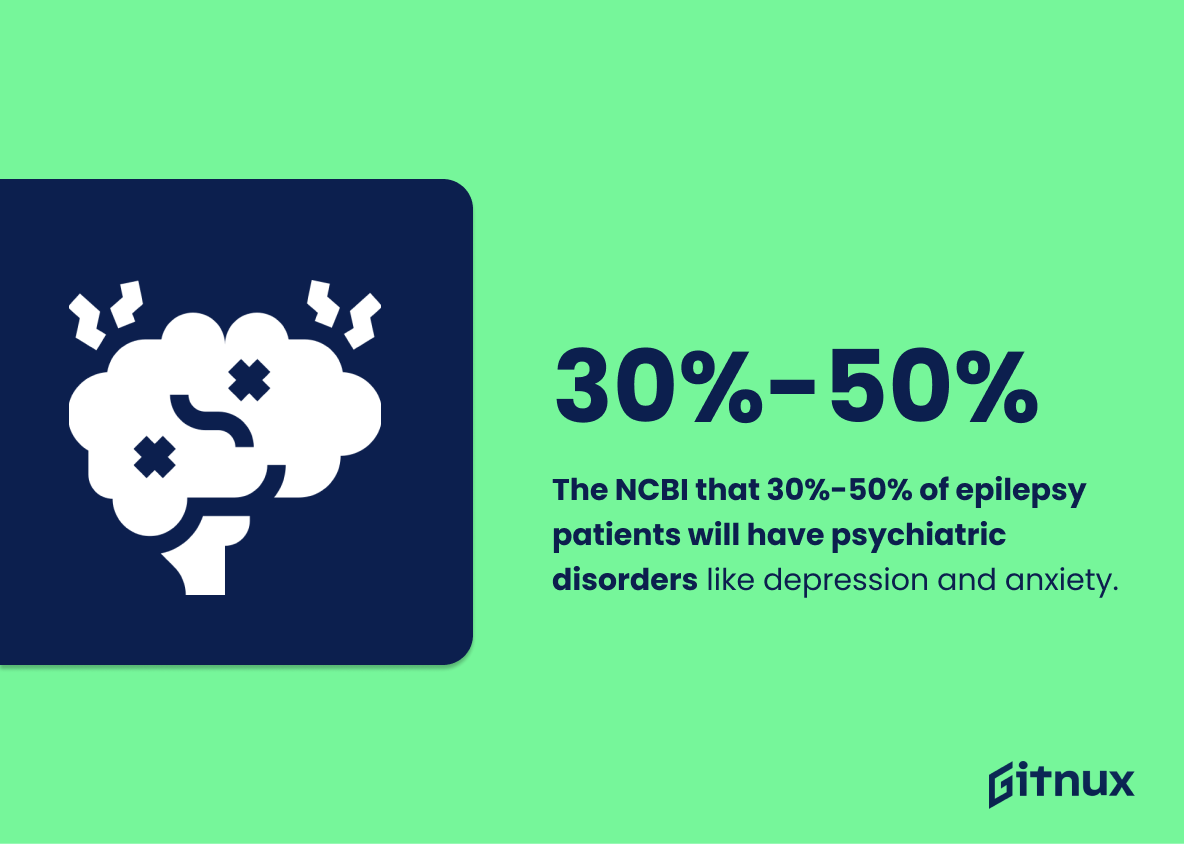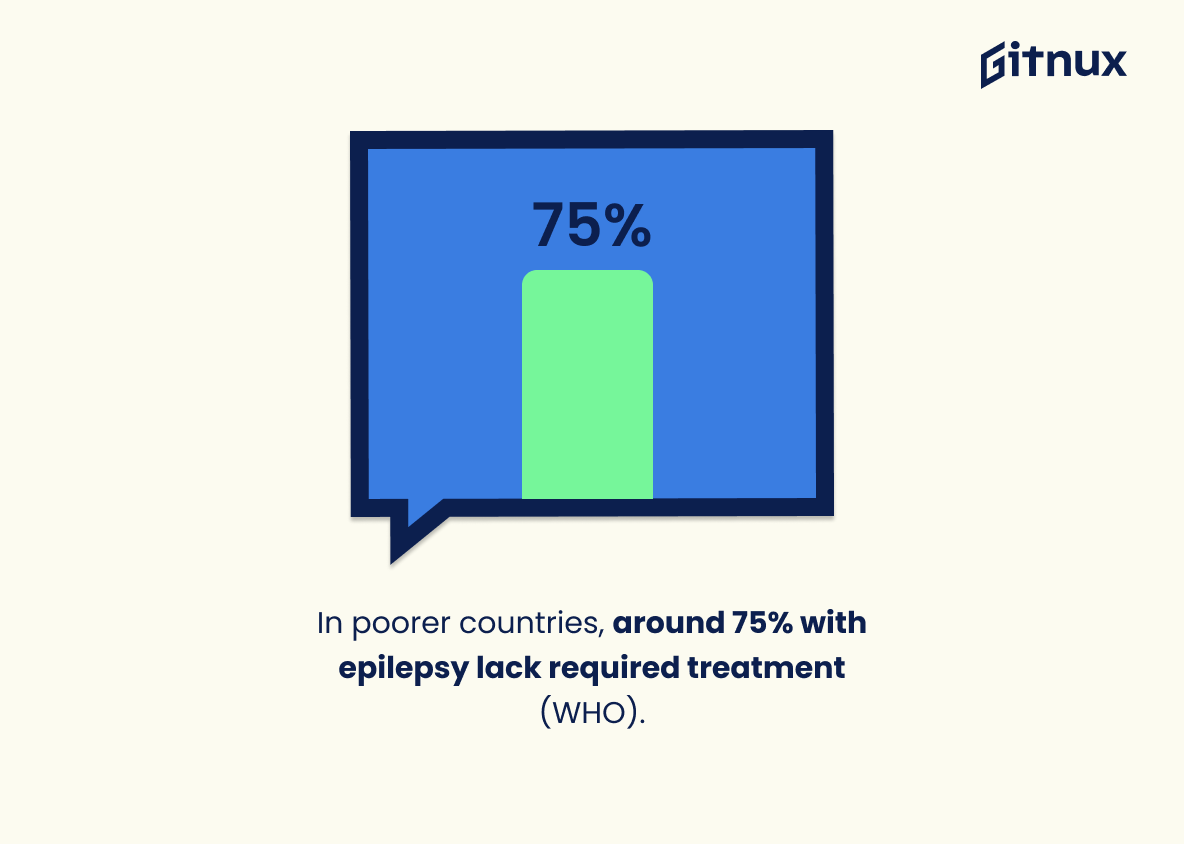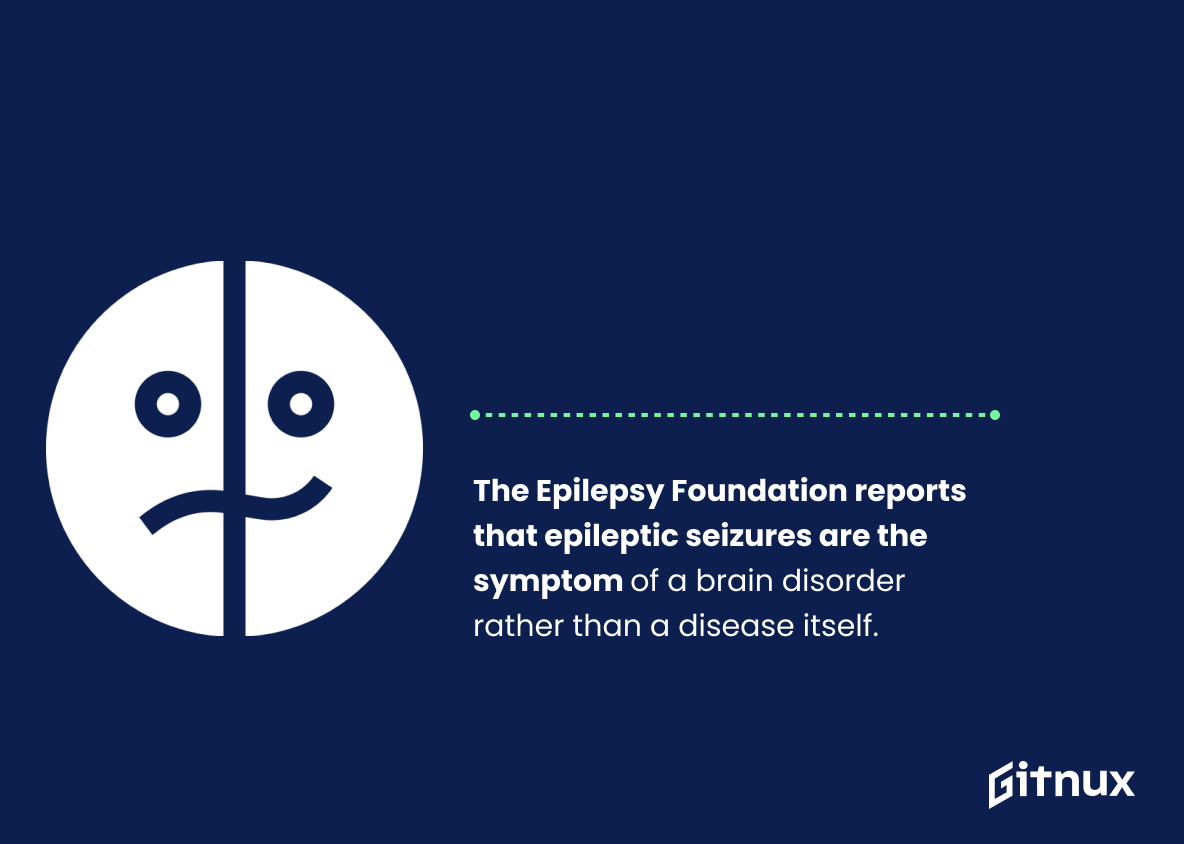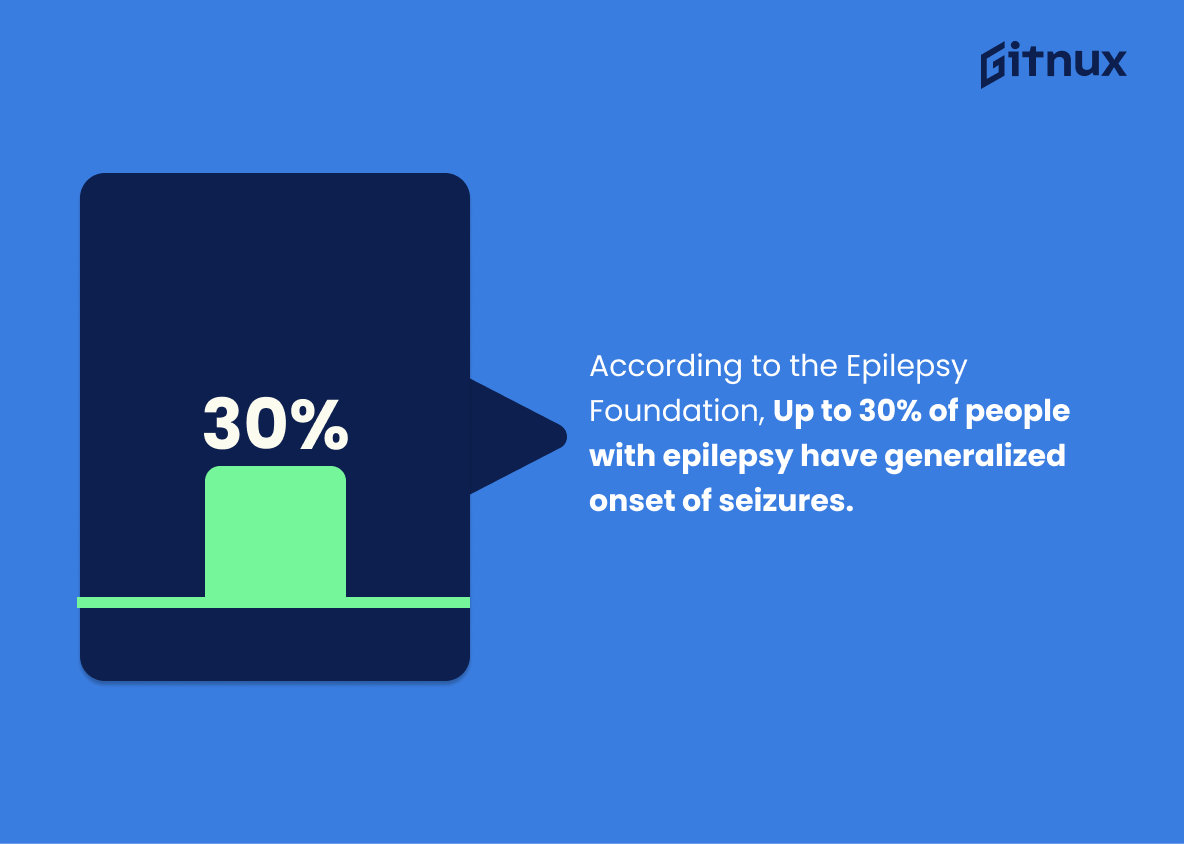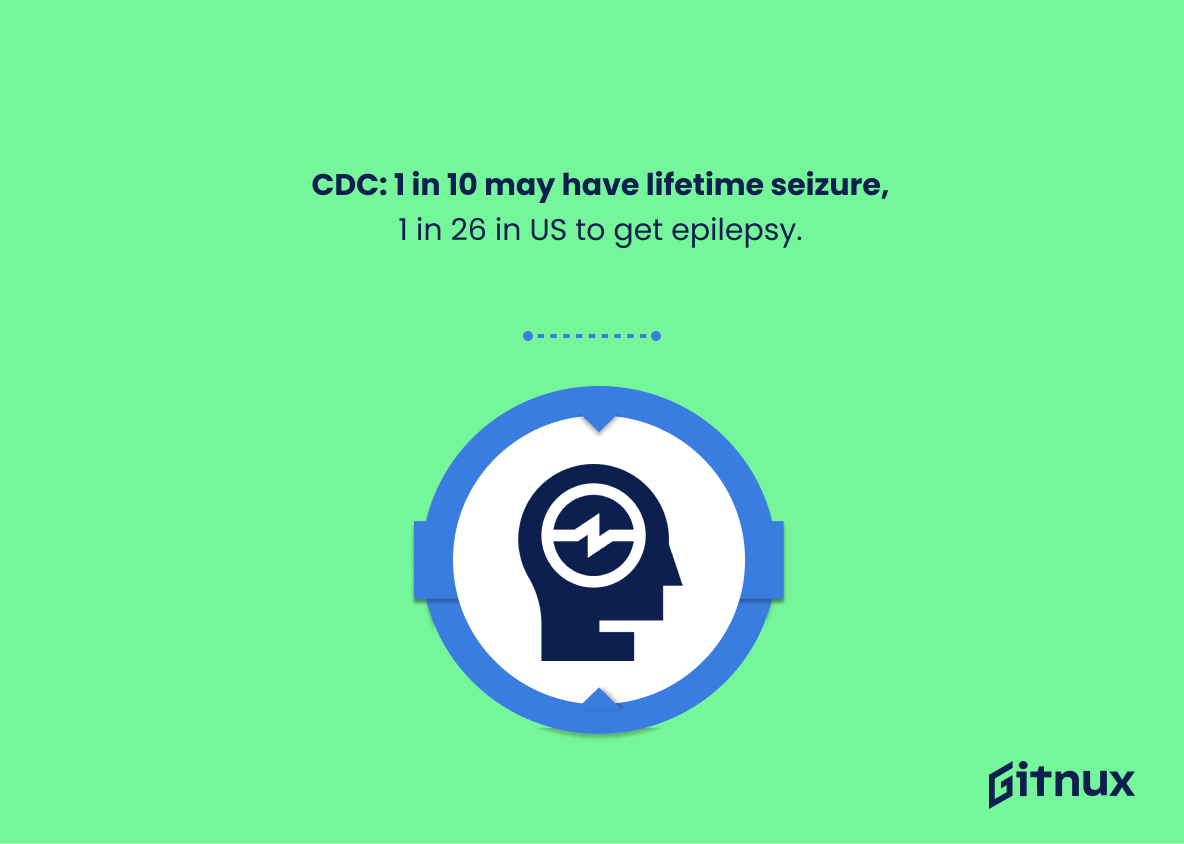Unraveling the factual labyrinth about epilepsy is often overwhelming, with a prevalence that is vast and as diverse as the condition itself. This blog post aims to give a spotlight to epileptic statistics, capturing crucial insights into this common neurological disorder. We’ll delve into the global prevalence, examine the risks across various demographics, and shed light on the current treatment scenarios, survival rates, and trends.
Buckle up for an enlightening journey through the numerical landscape that depicts the challenging reality faced by millions affected by epilepsy. Get ready to illuminate your understanding of this pivotal area of healthcare and its significant societal impact by reading on.
The Latest Epileptic Statistics Unveiled
According to the World Health Organization (WHO), approximately 50 million people worldwide have epilepsy.
Unveiling a reality in staggering numbers, the World Health Organization (WHO) documents the existence of approximately 50 million epilepsy patients across the globe. These numbers act as a beacon, flashing the magnitude of this neurological disorder worldwide. In a blog post centered around epileptic statistics, these figures provide readers with a startling yet essential understanding of the widespread prevalence and potential impact of epilepsy.
It underlines the pressing necessity to increase awareness, improve medical accessibility and invest in further research to devise innovative solutions. It empowers the readers by spotlighting an issue that demands global attention, moving it out from the shadows of ignorance into the forefront of international health discourse.
The Centers for Disease Control and Prevention (CDC) reports that about 3.4 million people in the U.S. have epilepsy.
Drawing our attention to captivating facts, the data provided by the Centers for Disease Control and Prevention (CDC) unleashes an astonishing reality: approximately 3.4 million U.S. residents battle epilepsy. Navigating life under this neurological disorder’s shadow, their experiences strongly influence the landscape of our understanding about epilepsy’s prevalence and impact.
Imagine, every individual encapsulated within this 3.4 million pool has unique stories, struggles and triumphs. Collectively, this illuminating figure of the U.S. epilepsy community tickles and twirls our perceptions, feeding valuable insights for physicians, researchers, policymakers, and caregivers. Not only does it beg the urgent need for comprehensive healthcare but also prioritizes potential advancements in epilepsy research.
Therefore, in an Epileptic Statistics blog post sphere, this data is more than just a number. It portrays an epic tale trailing down a journey, driving our conversation and the criticality of addressing epilepsy indifferent yet interconnected facets of our society.
As per the World Health Organization, nearly 80% of people with epilepsy live in low- and middle-income countries.
Diving into the depths of this data, it provides a profound perspective on the world’s epilepsy landscape. The World Health Organization unveils that nearly 80% of epilepsy sufferers reside in low- and middle-income countries. Such a striking insight throws a spotlight on the socio-economic aspects of epilepsy, pinpointing the massive burden this neurological disorder places on less affluent nations.
It beckons us to ponder on critical issues like resource allocation, access to specialized healthcare and appropriate treatment which are often sub-standard in such countries. Therefore, it drives home the undeniable necessity for enhanced funding initiatives and healthier policies to radically alter the grim scene today. It enlightens us about the intensifying urgency to tackle epilepsy on a global scale rather than just focusing on the progress made in high-income countries.
According to Epilepsy Research UK, there are over 60 types of seizures and one person may experience more than one type.
In delving into the world of Epileptic Statistics, one cannot disregard a remarkable revelation from Epilepsy Research UK. With a staggering count of over 60 distinct types of seizures identified, epilepsy transcends the parameters of a conventional understanding. The complexity amplifies when realizing that a person may experience not merely one, but multiple types of these seizures.
This adds a significant layer to the kaleidoscope of epilepsy realities, which encompasses an array of seizure manifestations. It underscores the importance of personalized attention and strategies in managing epilepsy, shaping the conversation around medical investigations, treatment methodologies, and patient care innovations.
The CDC states that approximately 1 in every 26 people in the United States will develop epilepsy at some point in their lifetime.
“Gleaning insights about epilepsy in the U.S, the CDC statistic serves as a stark mirror reflecting the magnitude of its presence. The proclamation of ‘1 in every 26′ people developing epilepsy freezes the ephemeral ailment into a tangible reality, nudging discussions about its seriousness. It dusts off common misconceptions, reinforcing in readers’ minds that this neurological condition isn’t an isolated, uncommon affliction.
Instead, it is an all-too-real probability that might knock on the doors of anyone, or any family, inviting readers to pay heed to its prevalence. As we dissect further into Epileptic Statistics, this data forms the backbone, encouraging us to enhance understanding, promote research, and advocate for proper healthcare measures for those affected.”
Per the CDC, nearly 1 of every 1,000 people in the United States die from Sudden Unexpected Death in Epilepsy (SUDEP) each year.
Delving into this numeric revelation from the CDC sheds light on a profound and unsettling reality – nearly one in every 1,000 individuals in the United States succumbs to Sudden Unexpected Death in Epilepsy (SUDEP) each year. This metric serves as a critical compass pointing towards the gravity of epilepsy and its life-threatening implications, making it an indispensable part of our conversation about epileptic statistics.
Far from being just another number on a sheet, this statistic whispers the untold stories of those falling prey to the most severe consequence of epilepsy. It nudges each one of us to acknowledge SUDEP as a serious and significant risk associated with epilepsy, serving as an urgent call for effective medical responses, advanced research, better treatment, and raised awareness. Our episodic discourse on epilepsy wouldn’t be complete without this stark reminder of the mortality risk epilepsy engenders, underscoring the pressing nature of this health concern.
Epilepsy Society states that at least half of people newly diagnosed with epilepsy will become seizure-free with their first epilepsy medicine.
Highlighting this statistic in a blog post about Epileptic Statistics illuminates a beacon of hope for those newly diagnosed with epilepsy, their loved ones, and care providers. It underscores the effectiveness of modern medicine in controlling seizures, promising a significant chance of leading a relatively normal and unimpeded life.
This fact empowers the readers with valuable knowledge, dispels despair, encourages early and consistent medication, and sparks conversations about the advancements in epilepsy treatments. By doing so, it allows us to move past the broad narrative of epilepsy as an uncontrollable menace, focusing instead on the potential for successful management and the encouraging outcomes with appropriate treatment.
The European Journal of Epileptology reports approximately 30-40% of people with epilepsy experience refractory seizures.
Highlighting the statistic from the European Journal of Epileptology offers valuable insight into the realm of epilepsy care, underscoring the reality that a significant percentage – 30%-40% – of people with epilepsy grapple with refractory or drug-resistant seizures. This magnifies the crucial necessity for enhanced therapeutic interventions and tailored drug regimens in managing this medical condition.
Furthermore, such pivotal data illuminates the extent of the struggle faced by patients, fostering awareness and compassion, which may propel further medical advancements or foster supportive initiatives. Moreover, it invigorates discussions around the quality of life and unmet needs of those living with epilepsy, who may continue to experience seizures despite medication. Hence, this statistic is not simply a number but a striking depiction of a complex health issue, emblematic of the challenges in epilepsy management.
The CDC reports that about 0.6% of all children ages 0–17 years have active epilepsy.
In the landscape of epileptic statistics, the CDC’s report that roughly 0.6% of children, aged between 0 to 17 years, are grappling with active epilepsy, forms a significant landmark. This piece of data not only underscores the prevalence of the condition among the young population but also helps frame a comprehensive understanding of epilepsy’s impact on our society.
Gauging its ramifications, this statistic dramatizes the urgency to invest in targeted healthcare strategies, dedicate resources for advanced research and devise efficacious patient care models to fight this neurological disorder. In the process, it adds substantial weight to the ongoing dialogues around pediatric health, shaping policy planning and clinical approaches towards epilepsy at a scale that’s both encompassing and impactful.
As per the Epilepsy Foundation, more than half of people with epilepsy diagnosed in childhood outgrow their seizures as they mature, while others may continue to have seizures into adulthood.
Painting a vivid picture in the realm of epilepsy, this statistic threads a silver lining into the narrative of epilepsy prognosis. Rooted in the Epilepsy Foundation’s research, it unfurls a message of hope, stating that the tentacles of epilepsy loosen their grip with age, as seen in over half the patients diagnosed during their fledgling years.
Sewn into a blog post about Epileptic Statistics, this potent figure serves as a beacon, illuminating the winding path of epilepsy with promising outcomes. It huffs life into the otherwise clinical and detached representation of numbers and rates, presenting a comprehendible stride towards understanding the affliction’s progression.
Simultaneously, it molds an essential framework for further dialogues about persistent adult epilepsy, encouraging the exploration of possible triggers, treatments, lifestyle modifications, and research paths. The statistic, like this, shapes a fertile ground for creating awareness, fostering research, and nurturing hope for a condition that straddles millions of lives globally.
The National Center for Biotechnology Information reports that 30%-50% of patients with epilepsy will experience psychiatric disorders, including depression and anxiety.
Shedding light on this significant statistic within a blog post about Epileptic Statistics is crucial as it invites a more profound understanding of the intertwined relationship between epilepsy and mental health. By presenting the fact that the National Center for Biotechnology Information reports 30% – 50% of patients with epilepsy may encounter psychiatric disorders, like depression and anxiety, we can foster a dialogue about the holistic care needed in the treatment of epilepsy.
This statistic underlines the complex, interrelated impacts that epilepsy can have, not just on physical, but also on mental health, thus emphasizing the importance of comprehensive healthcare that addresses both the physical seizures and their potential psychological ramifications.
The WHO estimates that in low- and middle-income countries, about 75% of people with epilepsy may not receive the treatment they need.
Delving into the heart of such an alarming figure from WHO, reveals the stark disparity in epilepsy treatment accessibility amongst individuals residing in low- and middle-income countries. Approximately, three-quarters of these sufferers are devoid of the necessary treatment, underlining the widening gap between healthcare resources and their proper distribution.
The global healthcare community, while reading this blog post, should therefore feel compelled to address the logistical, financial, and educational barriers that hamper the efficiency of epilepsy care. This statistic undeniably throws light on the urgent need to demystify epilepsy, develop cost-effective treatment plans, and build capacities in such underserved regions.
The Epilepsy Foundation reports that epileptic seizures are the symptom of a brain disorder rather than a disease itself.
Highlighting such a critical statistic serves as a vibrant lighthouse, illuminating the inherent misconception surrounding epileptic seizures. It allows us to untangle the complex web of misconceptions that commonly associate seizures solely as a disease. By providing clarity, it cultivates an understanding that epileptic seizures are a symptom of a deeper brain disorder, challenging our traditional thought processes.
In the cascading ripple of Epileptic Statistics, this insight fuels our intellectual curiosity and drives more nuanced discussions about the topic. Armed with this knowledge, we can propel forward more targeted research, foster better patient care, and ultimately, chart a course towards more effective treatment strategies.
According to the Epilepsy Foundation, Up to 30% of people with epilepsy have generalized onset of seizures.
Undeniably, the statistic highlighted by the Epilepsy Foundation – up to 30% of people with epilepsy experience generalized onset of seizures – reflects a compelling facet of the overall epilepsy narrative. In focusing on the broader context of an Epileptic Statistics blog post, this figure emphasizes the sizeable proportion of the epileptic community contending with generalized onset seizures.
Exploring and understanding this subset could shed light on more effective management strategies, targeted treatments and could provide vital insights into predicting, if not preventing, these generalized onset scenarios. It underscores the ongoing need for research and more evolved treatments specific to this group.
The Centers for Disease Control and Prevention (CDC) suggests that 1 in 10 people may have a seizure during their lifetime, while 1 in 26 people in the United States will develop epilepsy at some point.
Unpacking the profound revelations from the recent CDC findings, it’s startling to delve into the reality that 1 out of every 10 of us, could experience a seizure incident in our lifetime. This percentage balloons further when we shift our focus to epilepsy; the United States alone anticipates that 1 in every 26 individuals will grapple with epilepsy at some juncture. Now, why does this statistic become a cornerstone in the narrative of a blog post about Epileptic Statistics?
Firstly, it emphasizes the sheer magnitude and prevalence of these neurological conditions, bringing to light a critical health issue that often fades into the background amid more prevalent discourse about other diseases. This numerical majority underscores the urgency in bolstering awareness, as well as enhancing research and medical initiatives to counter these conditions.
In addition, it serves as a focal point in dissolving the stigma often associated with these conditions. The vast numbers infer that seizures and epilepsy are not isolated to a minor subset of the population, hence fostering empathy and understanding in individuals who might not have direct personal experience with these conditions.
Finally, these statistics emphasize the importance of advocating for efficient medical services and support for individuals who experience seizures and epilepsy – because the numbers clearly illustrate that it’s not an isolated, but a shared and pervasive experience.
Weaving these statistics into the fabric of a blog post on epileptic statistics, therefore, not only substantiates the narrative with factual evidence but also fuels a meaningful conversation about a silent yet crucial health issue.
Conclusion
To encapsulate, understanding and acknowledging the statistics surrounding epilepsy is paramount. These invaluable data points accentuate the worldwide magnitude and impact of this neurological disorder. The figures underscore the reality that epilepsy is not selective and can affect anyone, regardless of age, race, or social status. Recognizing the prevalence and geographic spread becomes pivotal in driving further research, better treatment provisions, and boosting educational efforts.
Increased awareness eventually aids in eradicating social stigmas associated with this condition, fostering environments of inclusivity and understanding. As we continue to learn, grow, and innovate within the health sector, it is our collective hope that these epileptic statistics will soon reflect not just numbers but stories of progress, recovery, and triumph.
References
0. – https://www.www.ncbi.nlm.nih.gov
1. – https://www.www.cdc.gov
2. – https://www.www.epilepsy.com
3. – https://www.www.epilepsyresearch.org.uk
4. – https://www.www.epilepsysociety.org.uk
5. – https://www.www.epileptologie-bonn.de
6. – https://www.www.who.int
